How To Create A Sugar-free Pantry (By A Nutritionist)
- Emma Lisa

- Aug 23, 2024
- 19 min read
Updated: Aug 22
In this sugar-free post series, I will be sharing the simple ways you can create a sugar-free pantry written by a qualified Nutritionist. You don't have to fully overhaul your kitchen pantry, you can start small and make small shifts towards reducing your sugar intake and living a sugar-free life. Ready? Notepads and damp clothes out, let get into the cupboards and see how much sugar is hiding inside...

Creating a sugar-free pantry can be as simple as spending an afternoon overhauling your kitchen to be restocked with wholesome, minimally processed foods that are naturally low in added sugars. In a VERY short time, you can create a safe haven of healthy ingredients that support your sugar-free journey and overall well-being. By making over the kitchen into a sugar-free pantry, you'll be taking a proactive step towards reducing your sugar intake, supporting natural weight loss, and improving your overall health.
To get started, grab a cuppa and read through my Nutritionist's guide to making the sugar-free pantry in a Sunday afternoon or week by week. There are two approaches:
The Sunday Afternoon Pantry Overhaul
How much time do you have on your hands? Deciding how to transform your pantry depends on your personal preferences, budget, and lifestyle. For some people, they prefer to dive headfirst into the sugar-free lifestyle by completely overhauling their pantry and culling everything. This can be a powerful way to break old habits and create a fresh start. However, it can also be time consuming, overwhelming and costly.
The Week-by-Week Overhaul
If the above is not you, don't fret, a more gradual approach is equally as good and simply involves replacing not-so-healthy sugary food items as you finish them or as they come on sale. This practical method is way less daunting and allows you to adapt to going sugar-free in your own time and at your own pace. There really is no right or wrong when it comes to a sugar-free pantry, the objective is more about finding what works best for you, and making it stick long term.
No matter which approach you choose for yourself, the idea is to have on hand as many sugar-free options at your fingertips as possible so the temptation for sugary food is dramatically reduced. You know that old saying, "if you only stock healthy food in the house, you'll eat healthy food." Well, it rings true for sugar and is a fantastic way to ease into a sugar-free lifestyle without the stress of restrictive dieting.
How To Stock The Sugar-free Pantry
By A Clean Eating Nutritionist
SUGAR-FREE DIET: How To Create A Sugar-free Pantry (By A Nutritionist) | Eat Nourish Glow
Before I dive into the "how", overhauling your kitchen pantry is an excellent way to reduce your sugar intake and eating habits without sacrificing your love for sweets. I want to share how you can easily restock your pantry with simple sugar-free alternatives that are both delicious and of course, highly nutritious. Whether you're aiming to manage diabetes (like I do), reduce your sugar intake for weight loss, or you simply just want to eat better, I am about to equip you with the essentials of the sugar-free pantry.
Get ready to learn:
the simple list of must-have sugar-free pantry staples
creative ways to use these alternatives in your favourite recipes
a Nutritionist's sugar-free suggestions
So, let's dig to the back of those shelves, purge the sugary foods and learn how you can satisfy your sweet cravings without compromising your health goals. Your taste buds are going thank you for this!
The Sugar-Free Pantry Guide
Restock Your Kitchen, No More Hidden Sugar
This comprehensive sugar-free guide with one of the most obvious sources of sugar: cakes, muffins, cookies and biscuits. These items are quick and easy to grab for lunchboxes, office snacks or for on-the-go. However, the majority of store-bought baked goods are filled with hidden sugars that help to improve flavour, texture and the item's shelf life. Think packaged items like cupcakes and cake mixes, lunchbox muffins and snack bars, boxed cookies, sweet biscuits, and even savour biscuits. These usually contain heaps of hidden sugars, food colouring and processed ingredients.
The good news is that you can easily ditch the sugar and restock your pantry with the following:
homemade is best: batch-bake your own cakes, cookies and muffins with sugar-free recipes using wholefood ingredients, and then store or freeze the excess. You can easily sweeten with homemade fruit puree, or use a sugar-free sweetener like Natvia Suga F'xd or monk fruit (my two faves) without ever sacrificing taste.
sugar-free products: these are made with sweeteners like erythritol, monk fruit or stevia. Products such as PBCo's stevia sweetened mixes, Noshu's Low Carb range or other brands that use natural sweeteners like this to flavour food.
Store-bought baked goods might be super convenient, but they usually come with hidden sugars and processed ingredients that can derail your health goals. Choose high-fibre, low sugar options, consider making your own from wholefood ingredients, and start reading labels like a sugar detective. This way, you'll still be able to enjoy your favourite treats, and in a way that supports your health.
Hidden Sugars In Bread Products
Bread Isn’t Always Sugar-Free
Luckily, most traditional Australian bread loaves are relatively free of added sugar, but in other countries like North America, sugar is often hidden in everyday sandwich bread. Yes, even in those varieties marketed as “healthy.” So, if you enjoy a warm slice of sultana bread with melted butter, it’s worth knowing that it comes with a significant serving of sugar. The same goes for many so-called healthy wraps and flatbreads that claim to be healthier, only because they contain added vegetables. The truth is that these are foods are typically highly processed, low fibre products with added sugars, making them a less-than-ideal choice despite what the packaging might promise you. So, here is what you can do instead:
make your own bread or wraps: by blending eggs, cheese. seasonings, and a few vegetables together, or even by using cottage cheese. These high protein wraps literally take seconds to make, pour the batter in a pan, cook on both sides, and stuff with lots of fresh veggies for a healthy meal
sugar-free bread: go high-fibre breads with no added sugar, and choose ones that are made with minimal ingredients like sprouted grain, sour-dough, seeded bread loaves, or a low carb loaf
shop your local bakery: this is your best bet if you don't have a bread maker or the time to bake at home. Go for artisan breads and sour-dough, these are typically better quality and pure ingredients
Being label-savvy when it comes to bakery and bread products is the secret to eating less sugar. What looks healthy on the outside can often be packed with unnecessary sugar and fillers. By choosing simple, high-fibre options or better yet making your own, you can enjoy your daily bread without compromising your sugar-free goals.
ACTION TASK: go to your pantry and check for sugar in the bread brand you usually buy. If it is listed in the ingredients, especially the first 5, consider swapping this brand for a no sugar option, or make your own where you can control what goes in it better.
Bread Making Pantry Favourites
ADVERTISEMENT
The Hidden Sugars In Canned Goods
Sugars In Everyday Pantry Staples
Canned foods are a very sneaky place where many types of sugars hide. You need to read nutrition labels carefully to avoid them, and become savvy at spotting the many hidden names for sugar. Sugar can be lurking inside some healthy sounding products and often trips people up. For example, pantry staples such as vegetable soup, canned beans, corn, and other vegetables are often flavoured with sugar. Even seafood like salmon and tuna, or even tomato paste can contain added sugars.
ACTION TASK: go look at your pantry cupboard right now, I'll wait. How many canned foods do you have inside right now that have more than 3g of sugar per serving? I thought so...surprising isn't it? Choose whether you want to donate or just restock once you've used up sugary canned goods, and replenish your pantry with healthier items keeping this in mind:
choose items canned in water: over pre-flavoured types; you can always marinate before eating or season at the time of cooking to reduce your sugar intake
homemade stock: a few cubes with diced veggies and/or leftover meat and bones, makes a super nutritious soup in less than 30-60 minutes; just simmer, strain and freeze for a clean, healthy stock
make your own sauces: a can of diced tomatoes and seasoning is way cheaper than sugary bolognaise, and is dead easy to make. Just add fresh or dried herbs, lots of garlic and even a little stock or vegemite to make a more nutrient dense pasta sauce
As you are learning, hidden sugars lurk in everyday pantry staples like soups, sauces, and even canned vegetables. This makes it all too easy for people to overconsume sugar without ever realising it. Start checking labels and choose canned foods based in water or plain olive oil to help you reduce sugar. Your waistline is going to thank you for this one!
Added Sugar In Breakfast Cereals
From Granola to Bran Flakes, The Breakfast Trap
If there is one product that is the worst for sugary ingredients, its definitely cereals and breakfast bars in my opinion. The bold-lettered packaging might claim high in dietary fibre or an excellent source of protein, but it is usually all smoke and mirrors.
ACTION TASK: Check the ingredient list and nutrition label on the cereal currently in your pantry. Look closely; anything with more than 5–6g of sugar per serving is too high. If sugar (or one of its many sneaky names) is listed in the top 3 ingredients, ditch it. Cereals that you might think are marketed as healthy like granola, muesli and bran flakes, are often just as bad as the blatantly sugary ones geared towards kids.
Be aware, and shop with your sugar-free detective hat on and try this:
check labels carefully: breakfast bars are usually highly processed, so look for ones with minimal ingredients even from the health food aisle; read those labels or consider making your own
focus on low sugar: instead of falling for aggressive marketing, restock your pantry with cereals that have low sugar content and an actual high fibre count of 10g or more like puffed quinoa or rice
make your own: breakfast cereals and bars are quick and easy to make at home with very little fuss or time in the kitchen; use plain, high-fibre grains and flavour with fresh fruit or berries
The takeaway? Don’t be fooled by health claims and flashy packaging. Many so-called “healthy” cereals are loaded with sneaky sugar names and offer little nutritional value. A few grams of protein or the use of whole grains doesn’t make cereal a good choice, especially when the ingredient list is long. The best way to stay on track is to read labels carefully, prioritise dietary fibre over hype, and when possible, make your own breakfast at home.
Low Sugar Cereal Options
Here's some of my top sugar-free breakfast ideas to try. These options are not only delicious but also packed with nutrients, making them a great choice for a healthy breakfast or snack.
brown rice: makes a delicious, high fibre cereal when cooked with a little milk of choice and spiced with cinnamon, vanilla and stevia. You can also try this with buckwheat, quinoa, or rolled oats.
chia & oat overnight pots: high in fibre and protein, overnight pots are made with either oat or chia seeds, or a combo of both. You can stir in a quality protein powder to up the nutritional value and make an excellent well-balanced meal for breakfast, lunches or even small servings as dessert.
homemade granola: make your own with rolled oats, nuts, seeds, shredded coconut and spices like cinnamon or allspice. You can sweeten it up with fresh berries, mangoes, bananas, pineapple, and other seasonal fruits to provide natural sweetness and essential nutrients.
puffed rice & quinoa: if you are buying cereal, go for bland option like puffed grains, usually found on the bottom rows of shops shelves. Puffed rice, buckwheat, millet, and quinoa are great, wholefood options and can be flavour any number of ways.
oatmeal: made from rolled or quick oats with a splash of milk, dried fruit to sweeten, cinnamon and a drop of vanilla. Oats make a hearty breakfast and nutritious, high-fibre start to the day.
Choosing low sugar cereals doesn’t mean giving up flavour or satisfaction. It just means getting a little creative with wholefood ingredients. So, whether you're whipping up a warm bowl of spiced brown rice, prepping chia seed pots, or making your own granola, focus on fibre, protein, and natural sweetness without relying on added sugar.
Healthy Breakfast Favourites
ADVERTISEMENT
Hidden Sugar In Dressings & Oils
Why Homemade Dressing Is Better
The reason dressings taste good is often because of the sugar, and you'd be surprised what amounts you'll find in salad dressings, flavoured oils, and finishing sauces like gravy. Remember, sugar not only adds taste to shelf products, it also helps prolong their shelf life. Try these healthy swaps to lower the sugar you might not even realise you are consuming when eating salad:
homemade infusions: you can do all of this yourself simply by making and infusion with your favourite herbs and spices in a sealed jar, and it only takes a few minutes to prepare.
instead of store-bought dressings: get in the habit of making your own from scratch with more wholefood ingredients and no sugar.
stock with quality oils: choose from avocado, coconut or olive oil and unflavoured vinegars.
ACTION TASK: Here are my favourite homemade recipe ideas using healthy, wholefood-based salad dressings to flavour your summer pasta salads, winter Buddha bowls and more. Choose a few to try this week and see how they stack up with the store-bought one in your fridge.
Creamy Avocado Dressing: a smashed avocado with a little vinaigrette makes a deliciously good and healthy salad dressing or drizzle sauce for many dishes.
Greek Yoghurt & Garlic: this one provides protein and probiotics for gut health and is so easy to make with a little yoghurt and garlic. It works great as a dip for hot, spicy food as well.
Smashed Berries & Chia Seed Vinaigrette: add fresh in-season or (thawed) frozen berries and chia seeds to a basic vinaigrette for a tangy, naturally sweet summer salad dressing.
Nut & Seed Butter Drizzle Sauce: mix a little all natural nut butter of choice with a splash of soy or balsamic vinegar for a delicious Asian-inspired peanut or nutty sauce.
By making your own salad dressings instead of store-bought, you can enjoy more nutritious, sugar-free drizzle sauces that still taste great and nourish your body.
Added Sugar In Pasta & Simmer Sauces
Label Check For Savoury Sauces
Pre-made pasta and simmer sauces make for quick and easy meal prep, especially for busy, bigger families like ours. However, pre-made sauce is one food item where you'll always find plenty of hidden sugar. Food companies add sugar to help improve the flavour of sauce, and ensure a longer shelf life. It's no surprise then, that flavours especially popular with kids like sweet tasting satay, bolognaise, mild butter chicken or cheesy varieties are often the worst culprits.
ACTION TASK: Instead of relying on pre-made sauces you can make your own white sauce base and flavour it at home. This works well for most cheesy-based pasta bake dishes and only requires a little flour, corn starch, garlic, salt and pepper, and a splash of water to make. For spaghetti, simmer freshly chopped tomatoes, tomato paste, garlic and seasonings with meat and vegetables for a health, homemade bolognaise. Slowly start introducing more sauces that use less sauce, and rely more on dried or fresh herbs for flavour.
Sugar In Pre-Packaged Smoothie Mixes
Why Most Smoothie Mixes Aren't 'Healthy'
This one catches so many people off-guard! You know those pre-packed smoothie blends that might seem like a convenient and healthy option, don't be fooled. Many brands contain hidden sugars that can sneakily sabotage your health goals. You'll often find sugary additives like concentrated fruit juice, dried fruit, and added sweeteners lurking on the ingredient list. While these ingredients improve the taste, they also significantly increase the sugar content, especially if you are also adding your own milk and fruit to the mix.
ACTION TASK: check all the smoothie mixes and superfood powders you have in your pantry right now. If they contain more than 3g of sugar per serving, it's time to toss. Instead of relying on pre-packed blends, create your own "smoothie drop bags" that I shared in this post, How To Make The Perfect Smoothie Every Time where you use whole, unprocessed ingredients.
Here are some more healthy smoothie ingredients you can use to make for a low sugar meal:
fresh or frozen fruits: try fresh or frozen berries, bananas, and other seasonal fruits for all natural sweetness and essential nutrients. And don't hesitate to use frozen fruit over fresh; its often flash frozen right after picking and fresher than the raw fruit in the product section.
Greek yoghurt or plain yoghurt: these provide both protein and probiotics for gut health as well creating a rich, creamy texture for your smoothies.
leafy greens: fresh or frozen, greens such as spinach, kale, and other leafy greens add a nutrient boost, and dietary fibre to your smoothies. Be generous and add large handfuls often.
nut & seed butters: use the raw, runny kind which is typically pure and contains simply nuts, nothing else. This adds healthy fats, trace protein, and a lovely subtle flavour to smoothies.
oats or chia seeds: up the fibre in seconds with a few tablespoons of oats or chai seeds. Both provide dietary fibre and create a creamy texture.
plant-based milk: better for use in smoothies as dairy milk can ferment in the gut and cause upset in many people. Try unsweetened, organic almond, non-GMO soy, unsweetened oat, or coconut milk as a liquid base.
protein powder: shop around for a good quality brand of grass-fed whey-based or a complete plant-based protein. Read labels especially if you choose a flavoured variety; the same rule applies. Minimal ingredients from wholefood sources and little to no sugar.
For the sugar-free kitchen pantry, making your own smoothies from wholesome ingredients is the way to go over highly processed smoothie mixes. In most case, the packaged stuff isn't any healthier. In fact, they can be scary source of unwanted sugar and artificial flavours!
You Might Like:
Added Sugars In Snack Packs
Don't Let Clever Marketing Fool You
Those convenient, pre-packed lunchboxes snacks, and cute snack-packs might make lunchboxes easier in the mornings with grab-and-go treats, but they are often teaming with sugar. Not only sugar, but preservatives, artificial flavour and colouring too. These definitely need to go if you want to create a sugar-free kitchen pantry.
ACTION TASK: restock the pantry with more wholesome snack items such as rice and quinoa cakes, homemade granola bars or biscuits, nuts, seeds and dried fruit. Try these my famous Homemade Seed Biscuit recipe instead of store-bought crackers and biscuit. A little sauce container with vegemite, nut butter or hummus, makes a great healthy snack for adults and kids alike.
The Hidden Sugars In Yoghurt
Yoghurt seems like a healthy food full of probiotics for little bellies, calcium and protein, but it is also full of added sugar to bring out the flavour and preserve it's shelf life. If you look close at the nutrition labels of most yoghurt, you'll be shocked at the sugar content of many reputable brands. Many contain over 15-25g of sugar in a single serving, which is basically your entire day's RDI for sugar in one hit. This is super common in the fruit or creamy flavoured types that might seem healthy because they contain fruit. They aren't.
Low Sugar & Sugar-free Yoghurt
The good news it that you can easily make your own delicious sugar-free yoghurt at home. Whipping up your own from scratch or by flavouring plain, unsweetened varieties gives you full control over the ingredients, flavour, and quality, without any of the hidden sugars or additives found in store-bought versions. Things to consider:
flavour it at home: buy a quality yoghurt such as Greek or plain, and flavour it at home with fresh or smashed fruit, homemade compote or purees, or other low sugar alternatives.
fruit sauce: make your own sugar-free fruit sauce to stir through that is far more healthy. You can do this simply by pureeing and simmering berries or other fruits like I did in this Chia Jam recipe.
gourmet flavour: add nuts and seeds, a good quality, low sugar protein powder, and spices such a cinnamon, allspice and ginger for natural flavour
protein yoghurt: don't be sold on those gym protein types, many are filled with excess sugar to help them taste good. Make your own from any plain yoghurt by stirring in a low sugar, protein powder like Happy Way Whey Protein Powder Vanilla or Nutra Organics Organic Thriving Family Protein. All you need is one scoop to boost protein and create the base for a healthy meal or snack.
Making or flavouring your own yoghurt is one of the simplest ways to reduce hidden sugar in your diet. You can start from scratch with a starter such as Mad Millie Greek Yoghurt Kit and flavour plain yoghurt, or invest in a proper yoghurt maker like the Davis & Waddell Multi Yoghurt Maker It really doesn't take much effort to create homemade, and allows you to enjoy a more nourishing options without the unnecessary sugar or food additives.
Make Your Own Yoghurt At Home
ADVERTISEMENT
Added Sugar In Peanut & Nut Butter
The reason peanut nut butter tastes so good is, you guessed it, sugar! Many of the solid nut butter types are highly processed and contain lots of added sugar to make a flavourful spread. You may hear gum rats claim that peanut butter is a good source of protein but this is false, it's not. Most peanut butters only contain 7-8g of protein per serving, and that is the more natural types. So, while peanut butter gives you a little protein boost, it’s more of a healthy fat source than a protein source. To get 30g of protein from peanut butter, you’d need almost half a jar (and over 700 calories), hardly worth it.
If you have a tub of the junky stuff, donate it or use it up, and then swap it out for an all-natural type made with only plain nuts or seeds and a little salt. Here's some ideas and varieties to try:
make your own: nut butter is so easy to make if you have a food processor like this one. Simply add nuts and seeds, a splash of water and blend; store in the fridge for up to 1 week in a mason sealed jar.
gourmet & superfood spreads: make the most delicious spreads by roasting the nuts in oven before blending, adding superfoods like raw cacao powder, chia seeds for fibre, or stevia for an all natural sweetness.
look for sugar-free brands: there are many top quality nut butter brands if you want the convenience of ready made store-bought brands. Some to try are Every Bit Organic Raw by Crack'd or Food To Nourish Sprouted Almond Spread, but my absolute go-to nut butter is any type made by Mayver's like their Smooth Natural Peanut Butter or Smunchy Natural Almond Butter.
Swapping out sugary spreads for homemade or natural options not only reduces your sugar intake but also adds real flavour, healthy fats, and nourishment to your meals. All this without the processed extras.
Hidden Sugars In Beverages
Not surprising, many bottled drinks are brimming with hidden sugars or artificial sweeteners. These are best avoided if you want to create a sugar-free pantry. For instance, many vegetable juices, which you might assume are ok as they are just juiced veggies, as actually loaded with sugar to make them taste better. Soda, colas and other fizzy drinks aren't any better, and even though they might claim to be sugar-free or diet-friendly, they are full of artificial sweeteners.
sugar-free options: swap sugary sodas and juices for water, sparkling water, or herbal tea.
carbonated drinks: restock with tonic or soda water and sweetened it at home with smashed fruit, stevia drops or make an effort to retrain your tastebuds.
soda maker: yes, you can make your own fizzy drinks with a soda maker like SodaStream Art Drink Maker and turn tap water into delicious fizz.
Making the switch to low-sugar drinks not only reduces the hidden sugars in your diet sweeteners that contribute to cravings, weight gain, and energy crashes, this also helps to retrain your tastebuds to enjoy more natural flavours. Choosing option like water, herbal teas, or homemade fruit-infused sparkling drinks for healthy swaps. You'll be nourishing your body while creating habits that support long-term wellbeing and a truly sugar-free lifestyle.
Sugar Found In Spices & Seasonings
Yes, these are common pantry staples that can contain hidden sugars. Read those labels and go for individual spices, or consider blending your own. Powdered simmer sauce mixes like cheese sauce, pasta bake seasoning, fajita and taco mix, are a real common culprits for this.
The sugar-free pantry always has a well-stocked herb rack. Whether you grow and dry them yourself, get clippings off friends or simply buy dried herbs, restock your kitchen pantry with all your favourite flavours.
Start getting in the habit of using more homemade marinades, herb rubs or infused oils to flavour your food instead of pre-packaged seasonings.
Real Sugar & Sweetener Substitutes
One of the hardest pantry item for most people to part with is in fact sugar itself. This is because sugar is used in so many things from your morning coffee to baking, sauces and desserts. But ideally, if you want a sugar-free pantry, the white and brown sugar needs to go. Instead go for all-natural sweeteners like stevia, erythritol, monk fruit, honey or maple syrup (just use sparingly). These are highly nutritious and have less impact on the body than table sugars.
Frequently Asked Questions
Do I have to toss out everything that has sugar in it?
No, not necessarily! Start with the obvious offenders like sugary soft drinks, lollies, sweet biscuits, and sugary breakfast cereals. Then work your way through the condiments, simmer sauces, and packaged snacks. I teach my clients to “crowd out” the sugary stuff by restocking each time they go grocery shopping with more nourishing food options. This way the sugar gradually becomes the exception, not the rule.
Do I need expensive “health food store” items to go sugar-free?
Not at all. Some of the best sugar-free pantry staples are simple and affordable foods like rolled oats, farm eggs, canned tuna, nuts, seeds, and frozen veggies. Fancy ingredients are optional, but definitely not essential. Do what fits your budget.
What about natural sugars like honey or maple syrup?
They may be more natural, but they still raise your blood sugar. In the early stages of going sugar-free, it’s best to limit these too. Once your cravings are under control, you can occasionally enjoy them in small amounts without triggering the sugar cycle again.
What’ is the easiest swap to make for a sugar-free pantry?
I suggest you let that be your breakfast. If you normally start the day with sugary cereal, jam and toast and jam, or sweetened fruity yoghurt, instead try eggs, avocado toast, or sugar-free granola instead. That one change can cut a heap hidden sugar of your intake and without you having to feel like feeling like you are on a restrictive “diet.”
Nutritionist Note
Whew, what a list! This may be the long blog post I have even written, but I had so much I wanted to share to help you go sugar-free. Remember, all of the suggestions are just a starting point. You can go all in and completely overhaul your pantry or swap things out week by week as they get used up. Choose what is realistically going to work for you and your family. With a little planning and well-informed swaps, you can easily overhaul and build a sugar-free pantry that supports your and your family's health goals.
Healthy + happiness,
Emma Lisa xx
HEALTH & NUTRITION PRACTITIONER













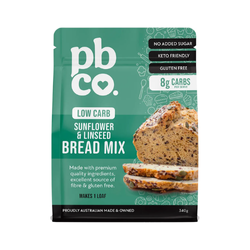















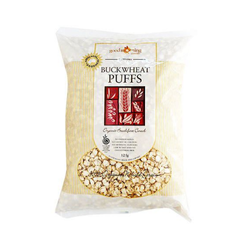

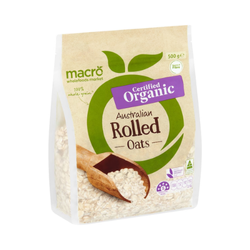

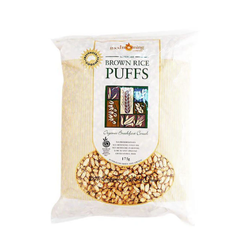




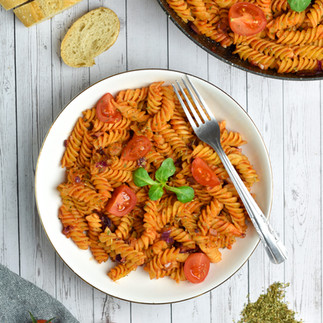














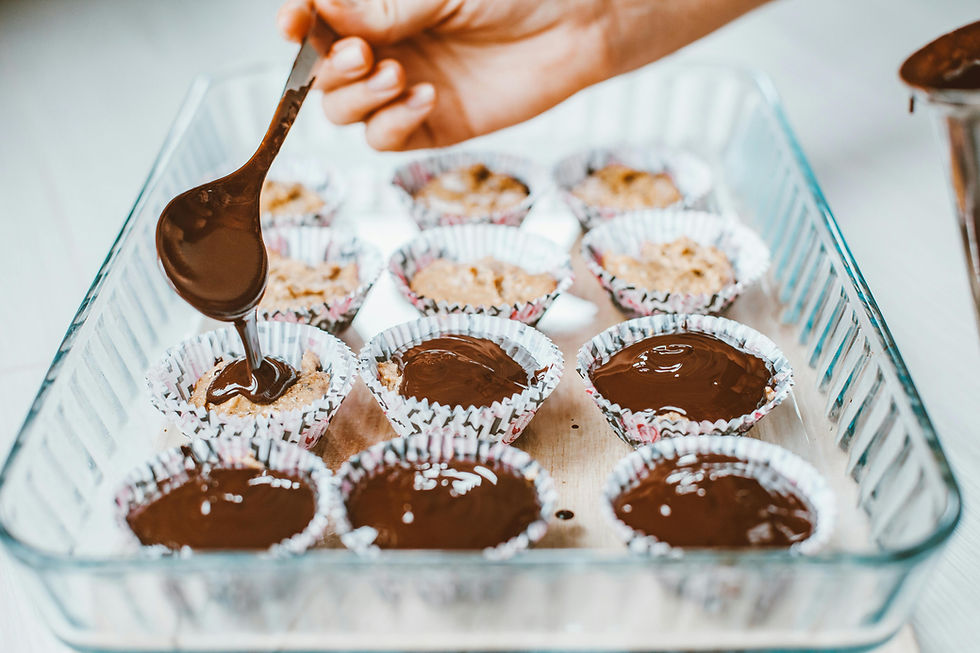
























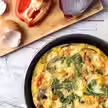



I wish to thank you for this comprehensive guide. It has been so very helpful to me making over my pantry. I am newly diabetic and had no idea where to start. Found your pin on Pinterest and followed it there. I am so glad I did too! Cherrie
This post was immensely helpful, thank you very much, Emma Lisa.
Lynne